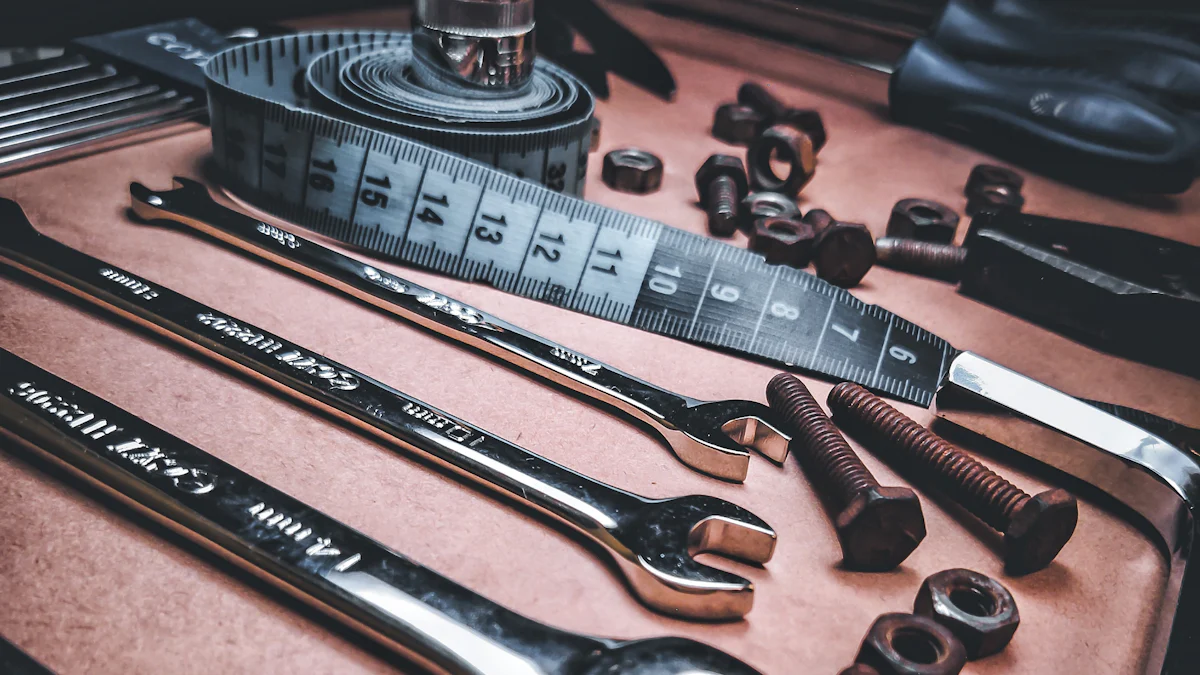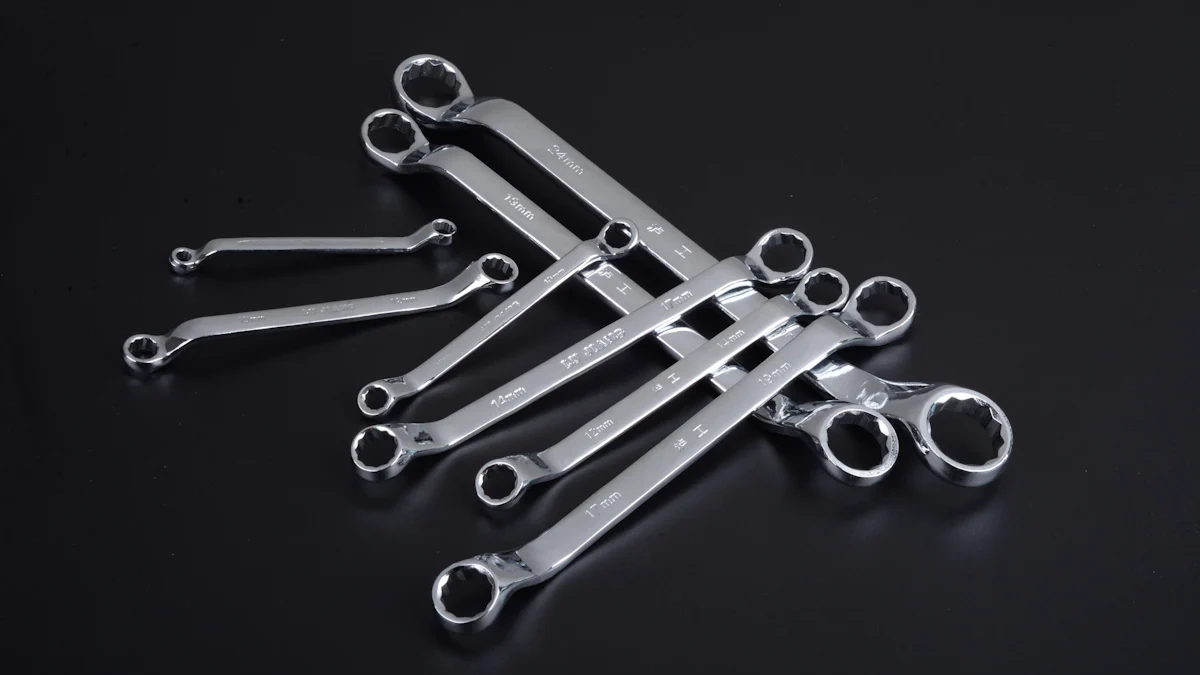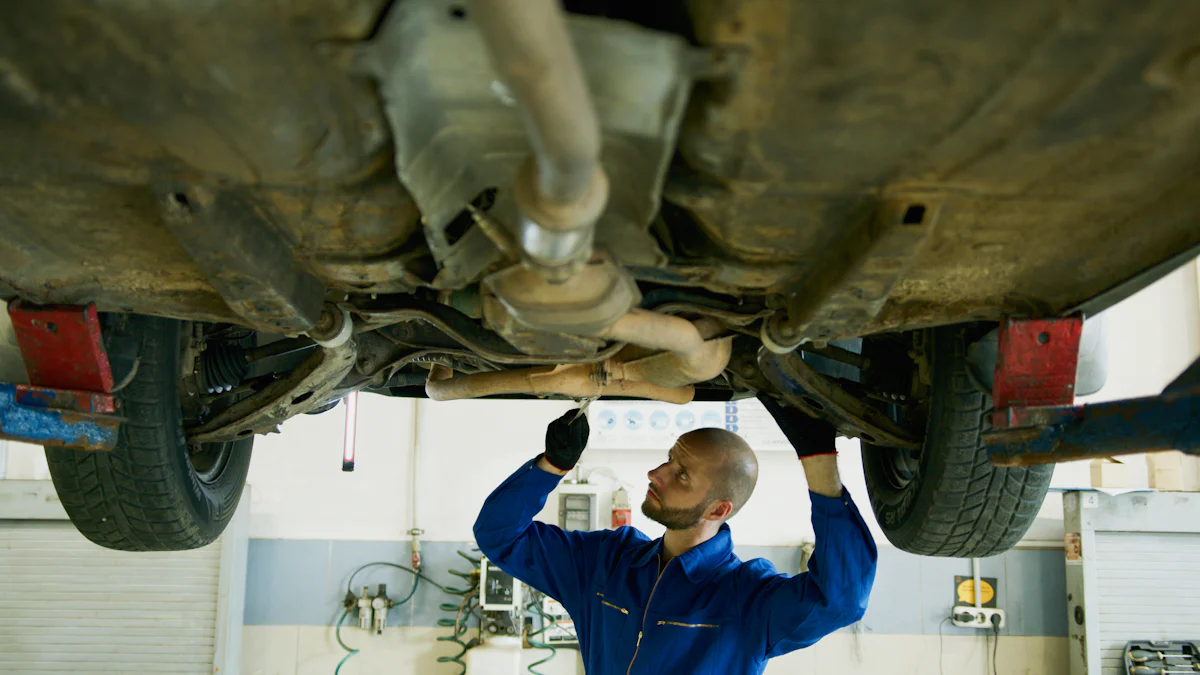
Using a torque wrench correctly ensures safety and precision in any mechanical task. A torque wrench applies a specific amount of force to a fastener, like a bolt or nut. This tool prevents over-tightening, which can damage parts or cause failures. You might find a lowes torque wrench useful for various projects. Understanding how to use this tool can make your work more efficient and reliable. Proper usage leads to better performance and longer-lasting equipment.
Understanding Torque Wrenches

Types of Torque Wrenches
Click Type
The click-type torque wrench is a popular choice for many users. You set the desired torque level by twisting the handle. Once you reach this level, the wrench makes a distinct clicking sound. This click tells you to stop applying force. The click-type wrench offers good accuracy and falls in the middle price range. This tool works well for most basic jobs and fits nicely in any toolbox.
Beam Type
The beam-type torque wrench has a simple design. It uses a scale and a pointer to show the torque level. When you apply force, the pointer moves along the scale. You stop when the pointer aligns with the desired torque value. This type of wrench is affordable and reliable. The beam-type wrench requires you to keep an eye on the scale while working.
Digital Type
The digital torque wrench provides a modern twist on torque measurement. This tool features an LED display that shows the torque value. You can set the desired torque level using digital controls. Some models even allow multiple torque settings for different tasks. A buzzer or light alerts you when you reach the set torque. The digital wrench offers high precision and ease of use.
How Torque Wrenches Work
Basic Mechanics
A torque wrench applies a specific force to fasteners like bolts and nuts. The tool ensures that you tighten these fasteners to the correct specification. This precision prevents damage and ensures safety. The wrench consists of a handle and an adapter or attachment. You attach the appropriate socket to the wrench for your task.
Calibration Importance
Calibration keeps your torque wrench accurate. Regular calibration checks ensure that the wrench measures torque correctly. An uncalibrated wrench can lead to over-tightening or under-tightening. Both scenarios can cause problems in mechanical tasks. Always follow the manufacturer’s guidelines for calibration intervals. Proper care and calibration extend the life of your tool and improve its performance.
Proper Usage of a Torque Wrench

Preparing for Use
Selecting the Right Torque Wrench
Choosing the right torque wrench matters a lot. Different tasks need different types of wrenches. For basic jobs, a click-type wrench works well. For high precision, a digital wrench might be better. The CDI torque wrenches are known for their accuracy and advanced features. These tools ensure precise tightening and loosening operations. Always consider the task at hand and the required torque range when selecting a wrench.
Setting the Correct Torque
Setting the correct torque is crucial. Look at the specifications for your task. Adjust the wrench to match these specifications. For a click-type wrench, twist the handle to set the desired torque. For a digital wrench, use the controls to input the torque value. Make sure the setting matches the requirements before you start working.
Step-by-Step Guide to Using a Torque Wrench
Positioning the Wrench
Positioning the wrench correctly is the first step. Attach the appropriate socket to the wrench. Place the wrench on the fastener. Ensure the wrench sits snugly on the bolt or nut. Hold the pivot in place with one hand. This ensures stability during the operation.
Applying Torque
Applying torque requires a steady hand. Turn the handle with your other hand. Listen for the click if using a click-type wrench. A digital wrench will alert you with a buzzer or light. Stop turning immediately after the alert. Over-tightening can damage the fastener.
Confirming the Torque
Confirming the torque ensures accuracy. Check the fastener to see if it meets the required specifications. If unsure, use a torque tester for verification. Regular calibration of your wrench helps maintain its accuracy. Proper application of torque maintains the integrity of fasteners and ensures optimal performance.
Tips and Best Practices
Safety Tips
Avoiding Over-Tightening
Over-tightening can lead to damage or failure. Always stop applying force when the torque wrench signals completion. A click-type wrench makes a clicking sound. A digital wrench uses a buzzer or light. Pay attention to these alerts. Use the correct torque setting for each task. This practice ensures safety and precision.
Regular Calibration
Calibration keeps your torque wrench accurate. Regular checks prevent over-tightening or under-tightening. Follow the manufacturer’s guidelines for calibration intervals. Calibration extends the life of your tool. Accurate torque measurements improve performance and safety.
Maintenance Advice
Cleaning and Storage
Proper cleaning and storage maintain your torque wrench. Wipe the tool after each use. Remove any dirt or debris. Store the wrench in a dry place. Use a protective case if available. Proper care prevents rust and damage.
Regular Inspection
Regular inspection ensures your torque wrench works correctly. Check for signs of wear or damage. Look at the handle, scale, and attachments. Replace any worn or damaged parts. Regular inspections keep your tool reliable and safe.
Additional Resources
Community Q&A
Common Questions
Many folks have questions about torque wrenches. One common question involves the best type of torque wrench for beginners. Another frequent inquiry concerns how often to calibrate a torque wrench. Some users wonder about the signs that indicate a torque wrench needs replacement. Others ask about the differences between click-type and digital torque wrenches.
Expert Answers
Experts recommend starting with a click-type torque wrench for its ease of use. Calibration should happen every 5,000 cycles or once a year, whichever comes first. Signs of wear include inaccurate readings and physical damage. Click-type wrenches offer simplicity, while digital wrenches provide precision. Experts suggest choosing based on the specific needs of the task.
Related Product Recommendations
Recommended Brands
Several brands stand out in the world of torque wrenches. CDI torque wrenches receive praise for their accuracy and reliability. Users find CDI comparable to high-end brands like Snap-on. Eclatorq offers a range of options, from high-quality models to more affordable choices. Many users appreciate the quality of Eclatorq’s top-tier wrenches.
Accessory Suggestions
Accessories can enhance the functionality of your torque wrench. Consider investing in a protective case to keep the tool safe. A torque wrench tester helps verify accuracy. Extension bars allow access to hard-to-reach fasteners. Socket sets provide versatility for different tasks. Regularly updating accessories ensures you get the most out of your torque wrench.
Lowes Torque Wrench
Overview of Lowes Torque Wrench
Features and Benefits
Lowes offers a variety of torque wrenches that cater to different needs. The click-type torque wrench stands out for its simplicity and reliability. You can set the desired torque using a knob at the handle’s base. When you reach the set torque, the wrench emits a clear click. This feature helps prevent over-tightening. The digital torque wrench provides precise readings on a digital display. You can switch between multiple torque settings with ease. Digital models suit tasks requiring high precision. Both types offer durability and ease of use.
User Reviews
Users appreciate the Lowes torque wrench for its accuracy and user-friendly design. Many find the click-type wrench perfect for everyday tasks. The audible click reassures users that they have applied the correct torque. Digital models receive praise for their advanced features. Users enjoy the convenience of digital displays and multiple settings. Reviews highlight the reliability and affordability of these tools. Customers often recommend Lowes for quality torque wrenches.
How to Choose a Lowes Torque Wrench
Factors to Consider
Selecting the right Lowes torque wrench involves several considerations. First, identify the type of tasks you plan to tackle. Click-type wrenches work well for general use. Digital wrenches suit precision tasks. Consider the torque range required for your projects. Ensure the wrench covers this range. Think about the tool’s size and weight. A comfortable grip enhances usability. Price also plays a role in decision-making. Balance cost with the features you need.
Comparing Models
Lowes offers various models to fit different needs. Compare the click-type and digital options. Click-type wrenches provide simplicity and reliability. Digital wrenches offer advanced features like multiple settings. Examine the torque range of each model. Ensure the chosen wrench meets your requirements. Look at user reviews to gauge satisfaction. Consider the warranty and customer support provided by Lowes. These factors help you make an informed choice.
Mastering the use of a torque wrench is vital for achieving precise and accurate fastener tightening. Proper usage ensures that you apply the correct torque, preventing both under-tightening and over-tightening. This precision is crucial in various applications, from car maintenance to assembly processes. Regular practice with your torque wrench enhances your skills and ensures optimal performance. Maintenance, including regular calibration, keeps your tool accurate and reliable. Embrace the journey of mastering this essential tool, and enjoy the benefits of improved safety and efficiency in your projects.
